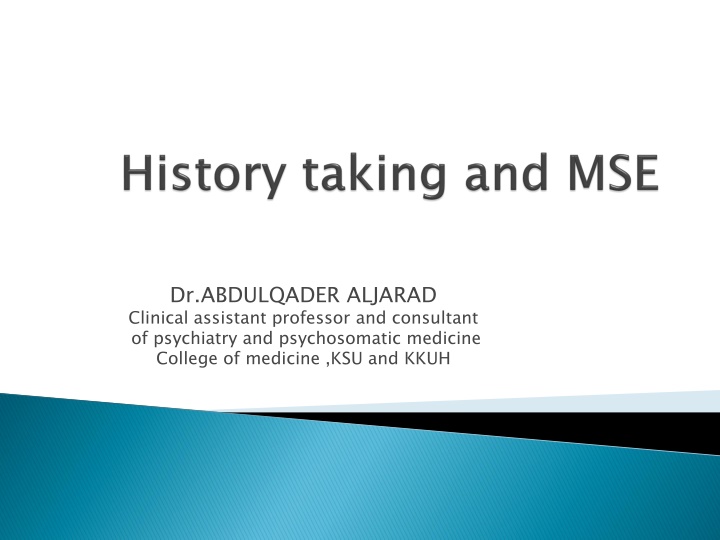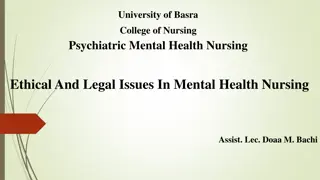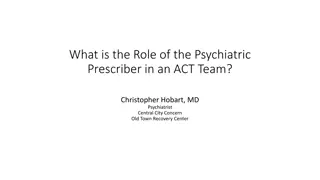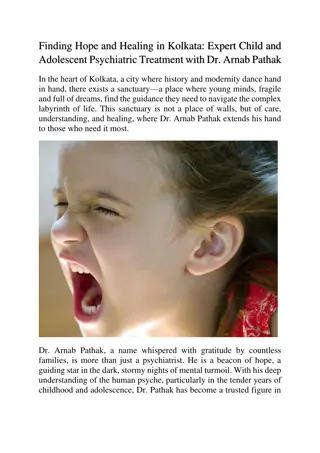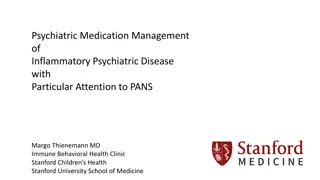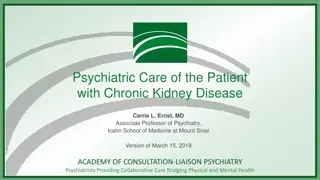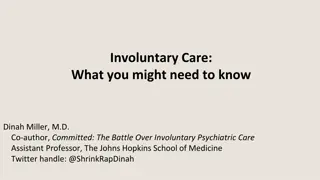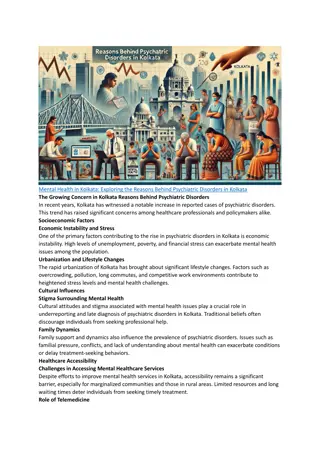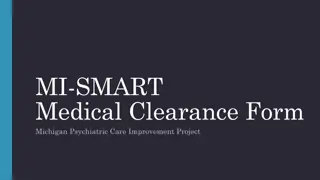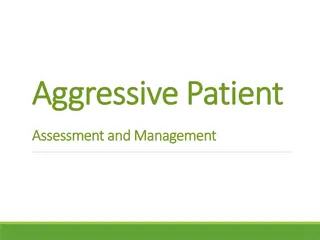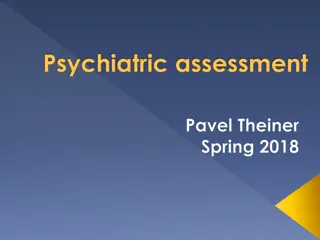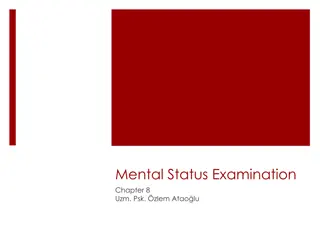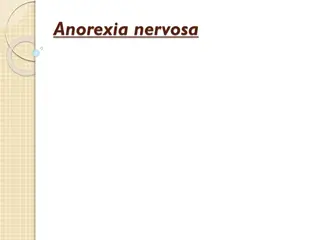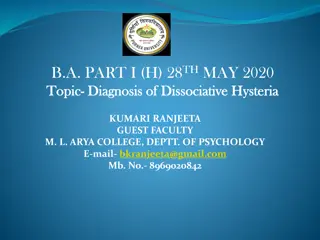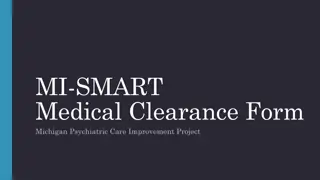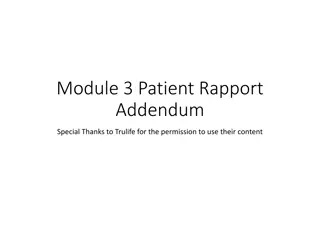Comprehensive Approach to Psychiatric Diagnosis and Patient Assessment
Dr. Abdulqader Aljarad, a clinical assistant professor and consultant of psychiatry, emphasizes the importance of obtaining necessary information, establishing rapport with patients, and understanding their circumstances to make an accurate diagnosis. The process involves putting patients at ease, starting with open-ended questions, and gathering a chronological background of the psychiatric problem. Identifying patients and their referral sources, along with chief complaints, are crucial steps in the diagnostic journey.
Download Presentation

Please find below an Image/Link to download the presentation.
The content on the website is provided AS IS for your information and personal use only. It may not be sold, licensed, or shared on other websites without obtaining consent from the author.If you encounter any issues during the download, it is possible that the publisher has removed the file from their server.
You are allowed to download the files provided on this website for personal or commercial use, subject to the condition that they are used lawfully. All files are the property of their respective owners.
The content on the website is provided AS IS for your information and personal use only. It may not be sold, licensed, or shared on other websites without obtaining consent from the author.
E N D
Presentation Transcript
Dr.ABDULQADER ALJARAD Clinical assistant professor and consultant of psychiatry and psychosomatic medicine College of medicine ,KSU and KKUH
Obtain the necessary information to make a diagnosis . Understand the person with the illness. Understand the circumstances of the patient . Form a relationship with the patient (rapport). Provide the patient with information about the illness , recommendation and prognosis .
Put patient at ease . Introduce yourself and Greet the patient by name Reassure privacy and confidentiality, separate room. L-shaped position and private comfortable setting . Suitable distance ( eg. with geriatric ,with aggressive pt.) Be supportive, attentive, non judgmental and encouraging. Explain about ,yourself ,the purpose of interview and expected time needed . Observe the patient s nonverbal behavior and Avoid excessive note-taking
With whom you will start ( pt. or his relative ). Why he come with a relative ? ( psychosis Vs. neurosis ) Diagnose based on criteria and constellation of symptoms that affect functioning level (eg. Social phobia Vs. paranoid schiz. Start with open ended questions .
It is the chronological story of the patients life from birth to present. It includes information about who the patient is, his problem (bio psycho-social aspects) and its possible causes and available support. Information elicited both from the patient and from one or more informants.
Identification of the Patient: Name, age, sex, marital status, occupation, education, nationality, residency . Referral Source: Brief statement of how the patient came to the clinic and the expectations of the consultation. Chief complaint: Exactly why the patient came to the psychiatrist, preferably in the patient s own words .
Chronological background of the psychiatric problem: nature, onset, course, severity, duration, effects on the patient (social life, job, family ), review of the relevant problems, symptoms not mentioned by the patient (e.g. sleep, appetite, ), treatment taken so far (nature and effect). Important ve (eg. history of mania in depressed patient ) Suicide ,homicide, substance abuse and organic disease
Past psychiatric history( admissions, depot injections ,drug level . .etc ) Past medical history . Family history . Social history. Personal history (Birth and Early development, School,Occupations,Puberty & Adolescence) Marital history. Drug history Tobacco and substance abuse. legal (forensic) problems.
Attitude to self (self-appraisal, performance, satisfaction, past achievements and failures, future..) Moral and religious attitudes and standards. Prevailing mood and emotions. Reaction to stress (ability to tolerate frustration and disappointments, pattern of coping strategies). Personal interests, habits, hobbies and leisure activities. Interpersonal relationships.
Transition . Obstructive technique . Facilitation technique : Doctors help patients continue in the interview by providing both verbal and nonverbal cues. CLARIFICATION. In clarification, doctors attempt to get details from patients about what they have already said. Empathy . Rapport.
MSE is a cross-sectional, systemic documentation of the quality of mental functioning at the time of interview. The mental status examination patient s feelings, thoughts, perception and behavior during the interview. It serves as a baseline for future comparison and to follow the progress of the patient.
Appearance: include body build, self-care, clothes ,grooming, hair , nails, facial expressions, and any unusual features (e.g. weight loss). Behaviour: both the quantitative and qualitative aspects. Note level of activity, posture, eye contact and unusual movements (tics, grimacing, tremor, disinhibited behaviour, hallucinatory gestures, etc) Attitude: Note the patient s attitude (verbal& non verbal) during the interview (interested, bored, cooperative, uncooperative, sarcastic, guarded or aggressive).
Speech: Speech can be described in terms of its quantity, rate of production, and quality. Listen to and describe how the patient speaks, noting: Coherence spontaneity Volume, flow & tone continuity speech impairments (stuttering, dysarthria )
Mood Mood Affect Affect The long term feeling state through which all experience are filtered. the visible and audible manifestations of the patents emotional response to external and internal events . The emotional foreground the emotional background Last days to weeks. Momentary , seconds to hours. Changes spontaneously, not related to internal or external stimuli. Symptom (ask patient) Changes according to internal & external stimuli, observed by others (sign ) (Current emotional state)
Mood : Euthymic , low , depressed , expansive ,elated , irritable Affect : Appropriate ,inappropriate Restricted , blunted ,flat Labile Mood : Affect :
contents Forms (process) the way in which a person puts together ideas and associations. Examples: goal-directed thinking Loosening of associations or derailment Flight of ideas Tangentiality Circumstantiality Word salad or incoherence Neologisms Clang associations (rhyming) Punning(double meaning) Thought blocking Vague thought what a person is actually thinking about. Examples: Delusions Preoccupations Obsessions and compulsions Phobias Suicidal or homicidal ideas Ideas of reference and influence Poverty of content
Thought stream Pressured thought , poverty of thought and thought block. Thought stream : Thought form : Flight of ideas , loss of association and perseveration . Thought form : Thought content : Delusion , obsession and overvalued ideas Thought content :
illusion : misperception of external stimulus Hallucinations : no external stimulus Which sensory system (e.g. auditory, visual..etc.) content third person Vs second person . patient reaction to hallucination hypnagogic hallucinations hypnopompic hallucinations . Pseudo hallucinations.
derealization : depersonalization and extreme feelings of detachment from the self or the environment Formication the feeling of bugs crawling on or under the skin. How to ask about hallucinations ? Have you ever heard voices or other sounds that no one else could hear or when no one else was around? Have you experienced any strange sensations in your body that others do not seem to experience? Have you ever had visions or seen things that other people do not seem to see? depersonalization and derealization Formication:
Consciousness level and orientation Attention and concentration : eg. Serial 7 test Memory Abstract Thinking: ( Vs. concrete thinking ) It is the ability to deal with concepts and to make appropriate inference. It can be tested by :Similarities or proverbs: General knowledge Judgment: Insight : the degree of awareness and understanding the patient has that he or she is mentally ill.
Orientation (score 1 if correct) Name this hospital or building. What city are you in now? What year is it? What month is it? What is the date today? What state are you in? What county is this? What floor of the building are you on? What day of the week is it? What season of the year is it? Registration (Score 1 for each object correctly repeated) Name three objects and have the patient repeat them. Score number repeated by the patient. Name the three objects several more times if needed for the patient to repeat correctly (record trials _______ ). Attention and calculation Subtract 7 from 100 in serial fashion to 65. Maximum score = 5 Recall (score 1 for each object recalled) Do you recall the three objects named before? _______ _______ _______ _______ _______ _______ _______ _______ _______ _______ _______ _______ _______
Language tests Confrontation naming: watch, pen = 2 _______ Repetition: "No ifs, ands, or buts" = 1 _______ Comprehension: Pick up the paper in your right hand, in half, and set it on the floor = 3 Read and perform the command "close your eyes" = 1 _______ Write any sentence (subject, verb, object) = 1 _______ Construction Copy the design below = 1 _______ fold it Total MMSE questionnaire score (maximum = 30)
Differential diagnoses . Provisional (working ) diagnosis . Investigations . Management (acute Vs .chronic ) Outpatient Vs. inpatient . Bio psychosocial treatment Full explanation about the plan (S/E., efficacy ,risk of addiction and any other questions from the patient .) Doctors explain treatment plans to patients in easily understandable language and allow patients to respond and ask questions. Prognosis .
Empathy To put oneself in another person's place. Sympathy: Feeling sorry.
Transference: The pt are transferring feelings toward others in their life onto the physician. Counter-transference: Emotional reactions to the pt from the doc that often involve the doctor past experience.
The paternalistic style. The shared decision making style.
Professional Boundaries Difficult Doctor-Patient :Relationships The Seductive Patient The Hateful Patient The Patient With a Thousand Symptoms The Patient in the Hospital Setting The Mentally Disturbed Patient The Dying Patient
Thank you Thank you
